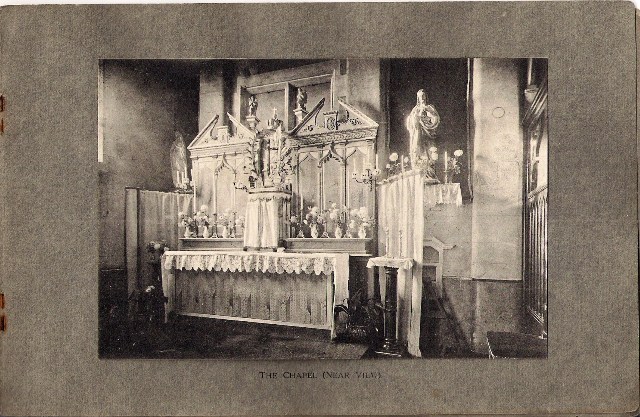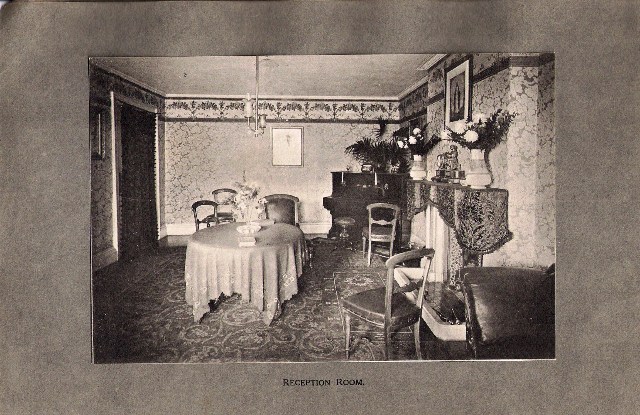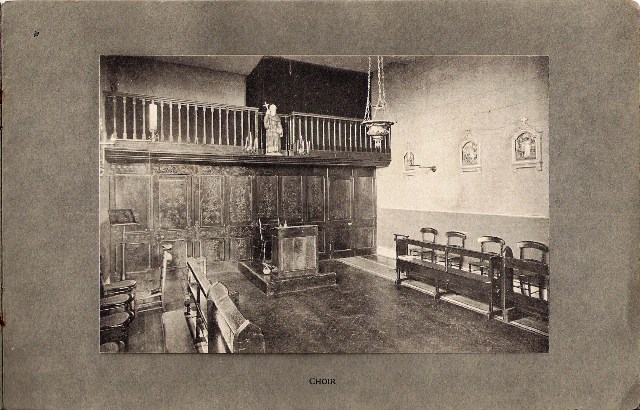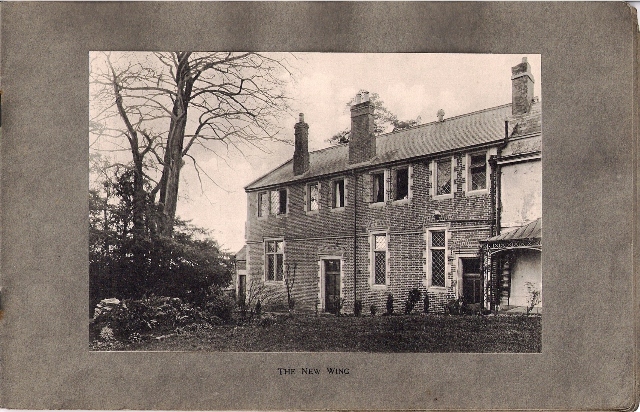The Priory and Bicester's French connection.
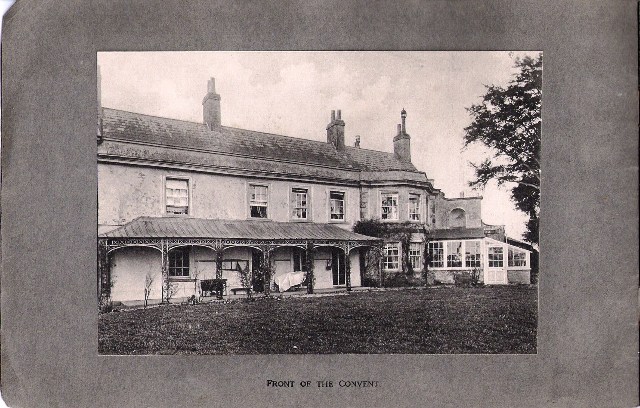 The pictures on this page show the interior and exterior of what would become the old Catholic church in Chapel Street. The photographs are undated but must date from after 1906 when the new wing was built and when the property was acquired on behalf of the exiled Olivetan Nuns who had fled persecution in France and before 1920 when a more tolerant climate allowed them to return and the Catholic community of Bicester took over the building. During their stay the Olivetan Nuns would run a small private school for girls.
The pictures on this page show the interior and exterior of what would become the old Catholic church in Chapel Street. The photographs are undated but must date from after 1906 when the new wing was built and when the property was acquired on behalf of the exiled Olivetan Nuns who had fled persecution in France and before 1920 when a more tolerant climate allowed them to return and the Catholic community of Bicester took over the building. During their stay the Olivetan Nuns would run a small private school for girls.
Many thanks to Monica Smith for the loan of the photographs.
A newspaper, presumably local, dated 28th of February 1902 carried the following report:
It is some centuries since the old monastic establishment at Bicester known as the Priory was suppressed;and, as there is nothing new under the sun, there appears to have just been established in the town another priory, on a very small scale, which is to be known as "Saint Edith's Priory," alias "South View" house. The Benedictines are a very old order it seems, having been established about the year 529, and introduced in England 596. The order is known for the extent of its wealth and learning. They have taken little part in politics, but have produced many valuable literary works. The order was expelled from 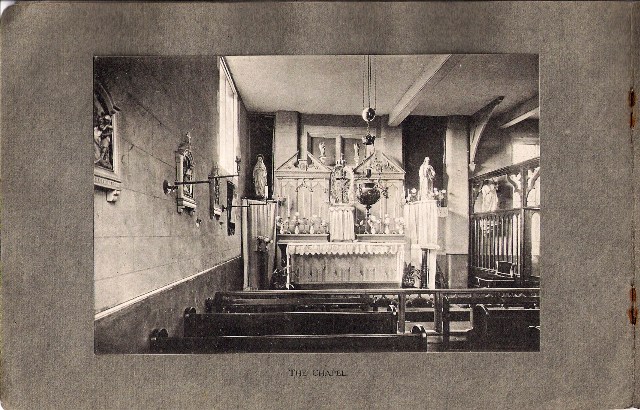 France by decree in March 1880, so thet it seems they have some very undesirable qualities, which in common with others, still hung to them in the year 1901. England, however, receives all parties with open arms.
France by decree in March 1880, so thet it seems they have some very undesirable qualities, which in common with others, still hung to them in the year 1901. England, however, receives all parties with open arms.
What is described as "The New Wing" in the last picture would later become Bicester's Catholic church until the opening of the present church ib 1963. Entrance to the church was through the right hand door while the upper floor served as the presbytery. In the years when it was in use it was very much the hub and centre of Catholic life and worship as can be seen from the number of photographs from the time showing various processions either leaving or returning to it.
In later years the building would become a Pentecostal chapel and is now a private residence.
